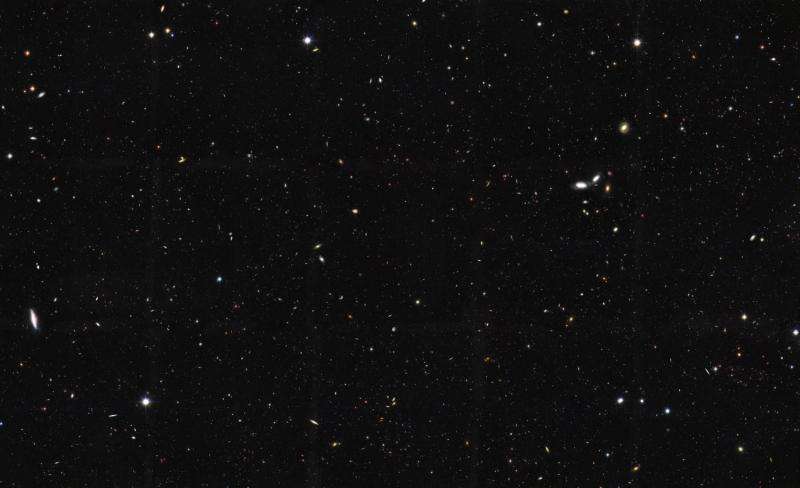A universe of 2 trillion galaxies

An international team of astronomers, led by Christopher Conselice, Professor of Astrophysics at the University of Nottingham, have found that the universe contains at least 2 trillion galaxies, ten times more than previously thought. The team's work, which began with seed-corn funding from the Royal Astronomical Society, appears in the Astrophysical Journal today.
Astronomers have long sought to determine how many galaxies there are in the observable universe, the part of the cosmos where light from distant objects has had time to reach us. Over the last 20 years scientists have used images from the Hubble Space Telescope to estimate that the universe we can see contains around 100 - 200 billion galaxies. Current astronomical technology allows us to study just 10% of these galaxies, and the remaining 90% will be only seen once bigger and better telescopes are developed.
Prof Conselice's research is the culmination of 15 years' work, part-funded by a research grant from the Royal Astronomical Society awarded to Aaron Wilkinson, an undergraduate student at the time. Aaron, now a PhD student at the University of Nottingham, began by performing the initial galaxy-counting analysis, work which was crucial for establishing the feasibility of the larger-scale study.
Prof Conselice's team then converted pencil beam images of deep space from telescopes around the world, and especially from the Hubble telescope, into 3-D maps. These allowed them to calculate the density of galaxies as well as the volume of one small region of space after another. This painstaking research enabled the team to establish how many galaxies we have missed - much like an intergalactic archaeological dig.
The results of this study are based on the measurements of the number of observed galaxies at different epochs – different instances in time - through the universe's history. When Prof Conselice and his team at Nottingham, in collaboration with scientists from the Leiden Observatory at Leiden University in the Netherlands and the Institute for Astronomy at the University of Edinburgh, examined how many galaxies there were at a given epoch they found that there were significantly more at earlier times.
It appears that when the universe was only a few billion years old there were ten times as many galaxies in a given volume of space as there are within a similar volume today. Most of these galaxies were low mass systems with masses similar to those of the satellite galaxies surrounding the Milky Way.
Prof Conselice said: "This is very surprising as we know that, over the 13.7 billion years of cosmic evolution since the Big Bang, galaxies have been growing through star formation and mergers with other galaxies. Finding more galaxies in the past implies that significant evolution must have occurred to reduce their number through extensive merging of systems."
He continued: "We are missing the vast majority of galaxies because they are very faint and far away. The number of galaxies in the universe is a fundamental question in astronomy, and it boggles the mind that over 90% of the galaxies in the cosmos have yet to be studied. Who knows what interesting properties we will find when we study these galaxies with the next generation of telescopes?"
The new work appears in "The Evolution of Galaxy number density at Z < 8 and its implications", C. Conselice et al., The Astrophysical Journal, in press. A preprint of the paper is available on the arXiv via arxiv.org/pdf/1607.03909v2.pdf
Journal information: Astrophysical Journal
Provided by Royal Astronomical Society





















